There can be your advertisement
300x150
Professional Names 10 Most Common Mistakes in Wardrobe Design
What dangers does an unfunctional layout pose, which material is taboo for wall finishing, and why a separate room is not always the best option for storing clothes — we explore how to create the perfect wardrobe
These days, in an effort to get rid of bulky furniture pieces, we often opt for organizing special wardrobe rooms: they help save space and use the available area more efficiently. However, due to the novelty of this trend, errors are frequently made. Together with designers from BeInDesign studio, we explain how to avoid them.
Wardrobe Design Exclusively in a Separate Room
Many believe that a dedicated wardrobe room is a must. This is one of the most common mistakes among owners of small apartments: the wardrobe room becomes too large and space is used inefficiently. Therefore, if you're severely limited in living area, your option is to create a special zone using partitions or utilizing niches.
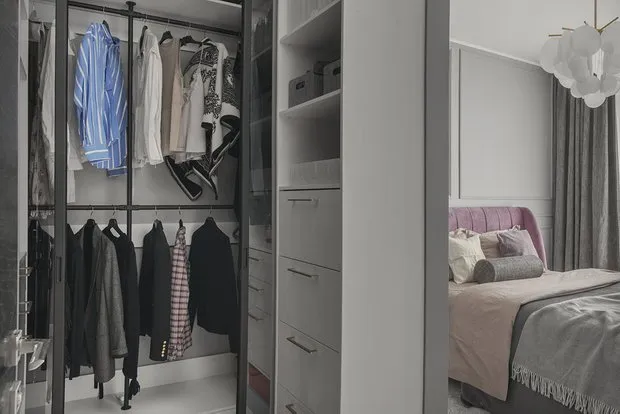 Design: UNK Project
Design: UNK ProjectChoosing Furniture at the Last Moment
Making a room and then picking the furniture is quite an unprofitable solution. It’s much more cost-effective to plan the furniture and layout simultaneously, skillfully combining decor.
Therefore, plan the wardrobe room contents in advance: take measurements, decide on the functional elements you need. The most budget-friendly and compact option is building a shelf frame from metal profile. Its structure depends on your needs: it can include shelves, sections for hanging coats on hangers, and sliding drawers.
A less economical but more visually appealing choice is a panel wardrobe where shelves and rails are mounted on special wall panels, either as standalone (in free layouts) or attached to the wall.
 Design: CARMINE HOME
Design: CARMINE HOME"Original" Flooring
Since most wardrobes are small, it's not advisable to use a different flooring type — too sharp a transition will look unnatural. Just like in a regular room, go for parquet or laminate with warm tones — generally, this is a safe bet.
 Design: studio Zooi
Design: studio ZooiUsing Wallpaper for Wall Finishing
It’s also not recommended to use wallpaper: due to possible temperature fluctuations, they can visually and qualitatively change rather quickly — the need for cosmetic repairs increases. A more reasonable and affordable solution is to coat the walls with washable paint.
 Design: Vera Chayka
Design: Vera ChaykaMaximum Experimentation in Wall Finishing
Many mistakenly think that since a wardrobe is a separate room, it should have an original design. In fact, the space should be organized in line with the style of other rooms in the apartment. Minor changes in color schemes are acceptable: paint the walls a different color to add individuality and set desired accents.
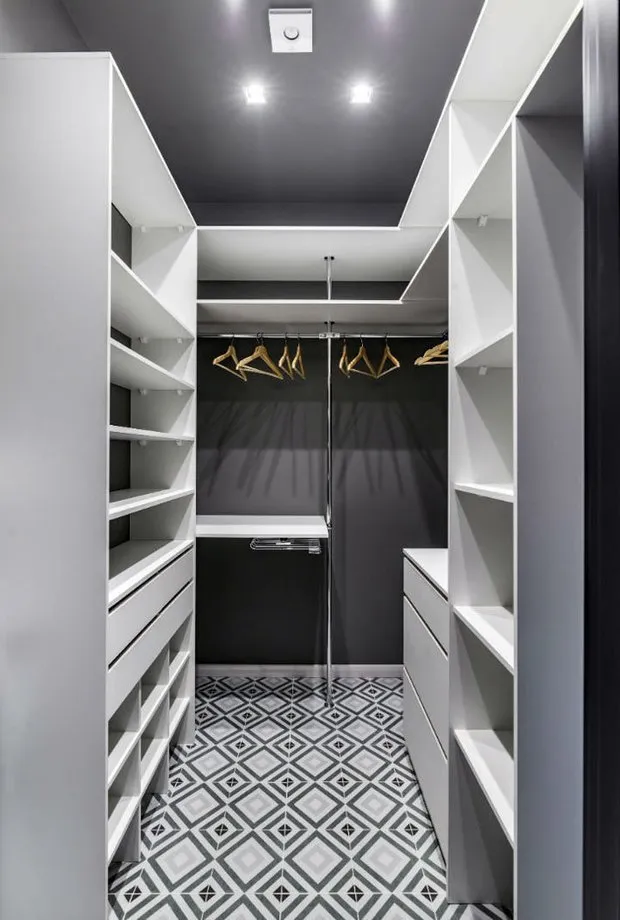 Design: studio ‘ArkhIdea’
Design: studio ‘ArkhIdea’Using Dark Tones
Light tones on walls serve as an excellent color choice due to the limited space (you can keep a difference of 1–2 tones from the main room) and help visually expand the area. One of the most common mistakes is using dark colors — unless you plan to turn your wardrobe into a storage or closet.
 Design: Inna Azorskaia
Design: Inna AzorskaiaImproper Storage Organization
Abandon cluttered placement of personal items — the chance of disorder increases and space is organized inefficiently. Divide the wardrobe room into several zones and arrange your items by use, seasonality, and access. Keep outerwear near the exit.
Separate men's and women's clothing in a family wardrobe (women usually have more long garments that require tall sections with hangers; men need more sections for short items and special slots for ties and belts).
Store shoes vertically on slanted shoe racks: seasonal models at eye level; others above or below.
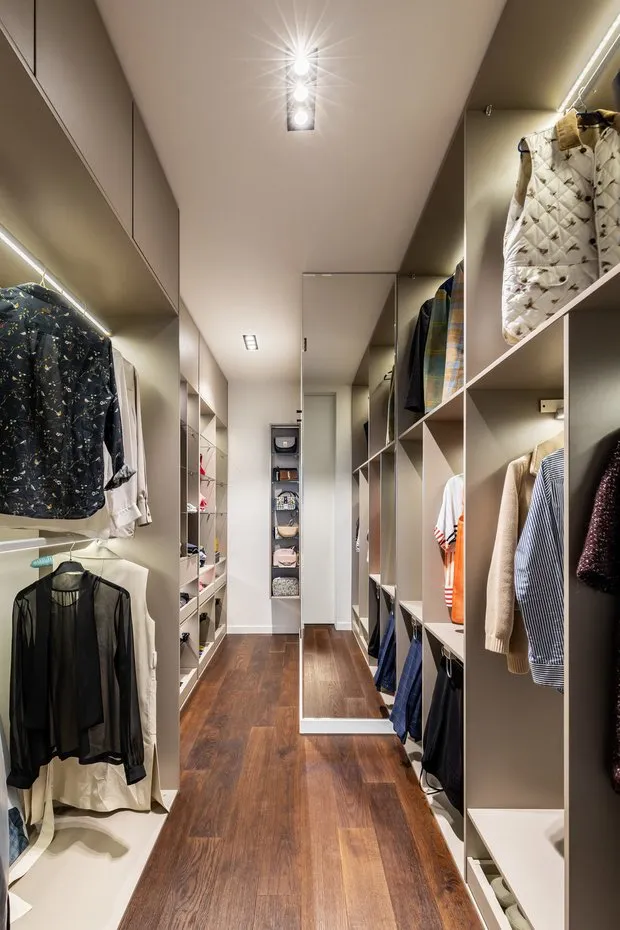 Design: ‘Architecture of Interior’
Design: ‘Architecture of Interior’Lack of Window or Ventilation in the Room
If you've allocated a separate room for a wardrobe, ensure it has a window. If it’s a space limited by partitions, don’t forget about ventilation. It is often believed that in non-living spaces, ventilation doesn’t matter much, but that’s not true: the quality of personal items can indeed suffer.
If you’ve designed a wardrobe in a niche, be sure to equip it with venetian doors that will provide air circulation.
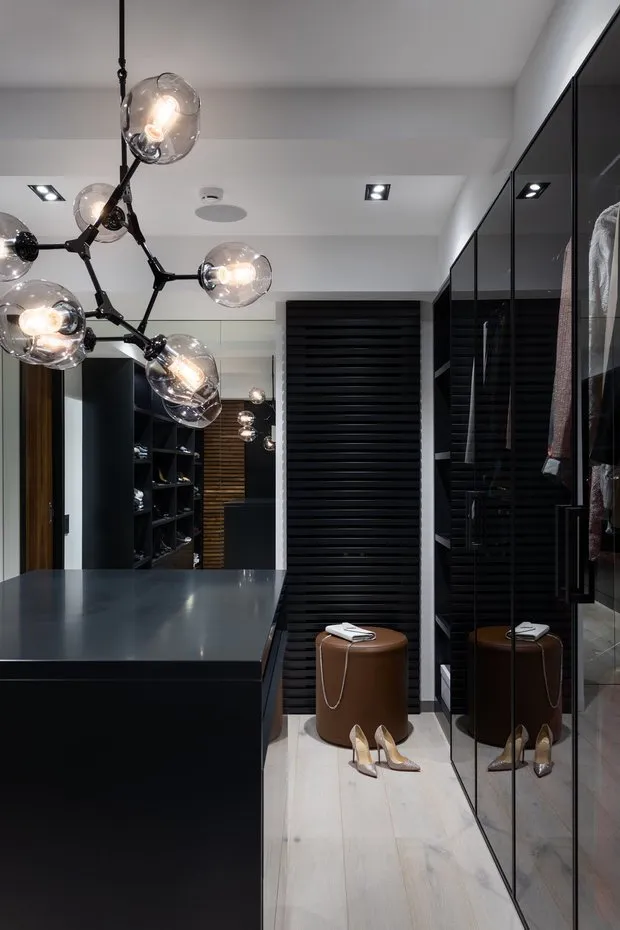 Design: GM Interior studio
Design: GM Interior studioPoor Lighting
A wardrobe room is not just a place for storing clothes: it’s also where we select outfits and change. Many forget this and think limited light in such a room doesn’t matter. However, such a choice will bring strong discomfort in the future. Use lamps, chandeliers, and lights at multiple levels. Using mirrors of various sizes is also a good solution for visually enlarging the space.
 Design: Alexei Sokolov
Design: Alexei SokolovUncomfortable Ambiance
Don’t forget about comfort and additional functionality of the space — don’t limit it: use built-in ironing boards or designate a spot for a vanity table. A footstool or foldable chair won’t hurt.
 Design: Alexandra Gartke
Design: Alexandra GartkeFeatured Photo: Design by Alexei Sokolov
More articles:
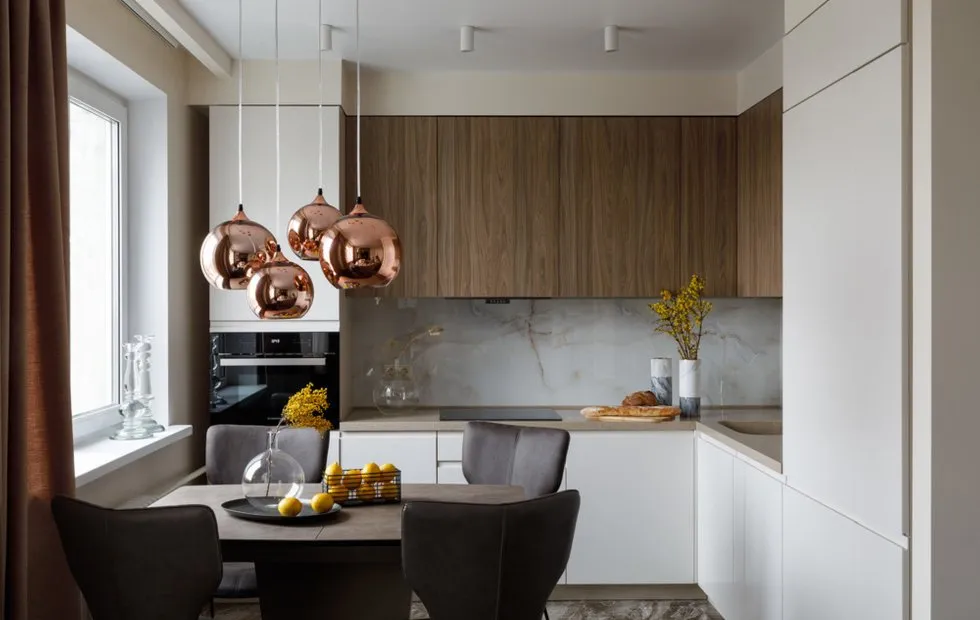 How to Equip a Tiny Kitchen in a Brezhnev-Era Apartment: 6 Ideas
How to Equip a Tiny Kitchen in a Brezhnev-Era Apartment: 6 Ideas Cool IKEA Finds for the Garden That Will Make Your Summer Unforgettable
Cool IKEA Finds for the Garden That Will Make Your Summer Unforgettable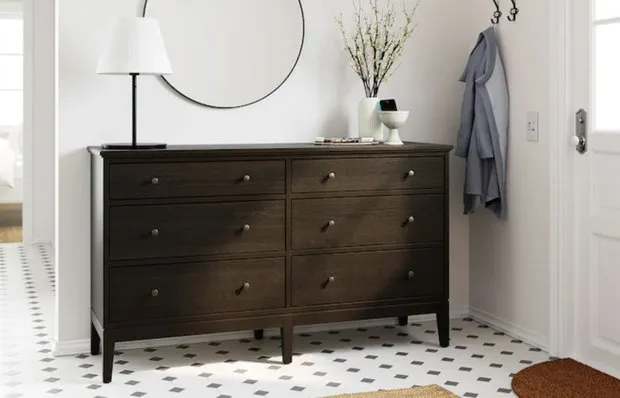 Top 10 IKEA Products from the New Collection That Won Our Hearts
Top 10 IKEA Products from the New Collection That Won Our Hearts Designer Lists Common Mistakes in DIY Bathroom Renovation
Designer Lists Common Mistakes in DIY Bathroom Renovation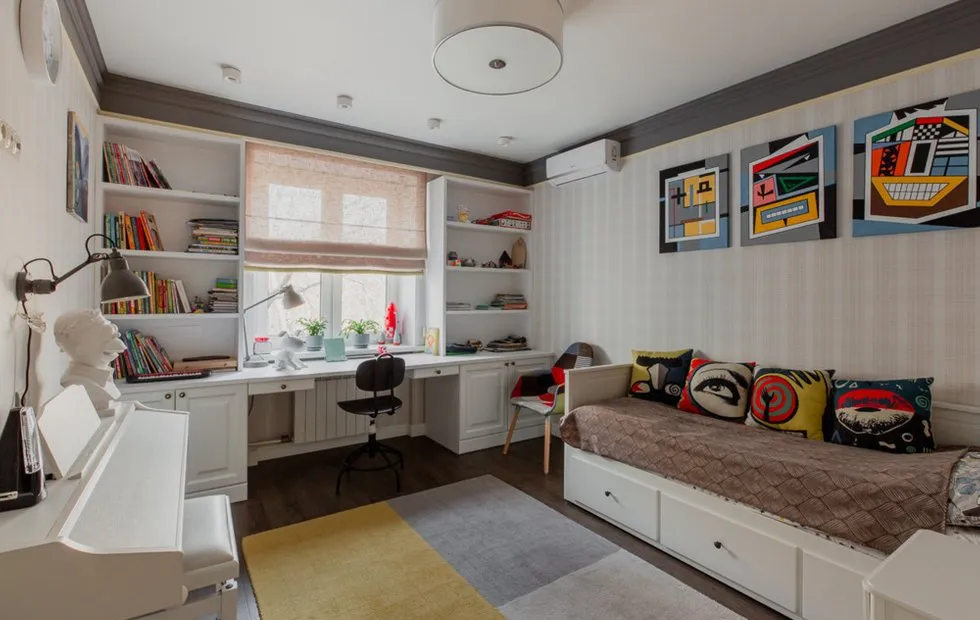 Most Functional and Budget-Friendly Ideas for Decorating a Teen's Room
Most Functional and Budget-Friendly Ideas for Decorating a Teen's Room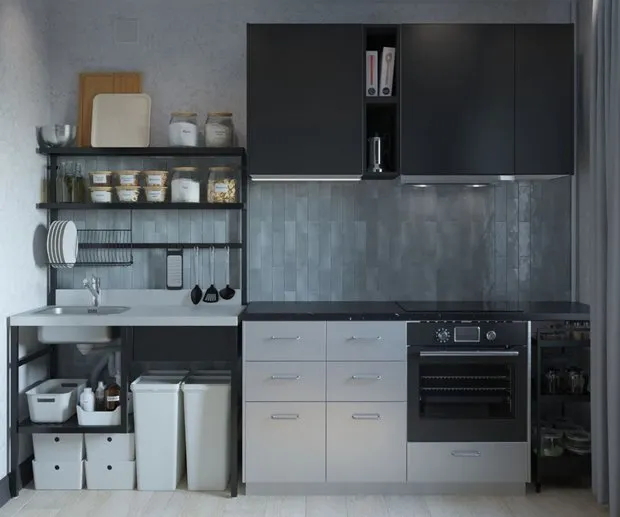 7 Simple Eco-Ideas from IKEA You'll Want to Implement Right Away
7 Simple Eco-Ideas from IKEA You'll Want to Implement Right Away One-Room Apartment for Five People? Genius Layout and Stylish DIY Remodel
One-Room Apartment for Five People? Genius Layout and Stylish DIY Remodel Three Unusual Houses in the Moscow Region That Will Inspire You to Build
Three Unusual Houses in the Moscow Region That Will Inspire You to Build